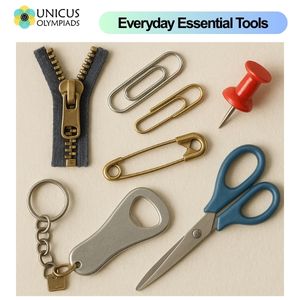

Small tools, though often overlooked, play a vital role in our everyday lives. From fastening clothes to organizing items, these simple yet ingenious inventions make daily tasks more efficient and convenient. Below is an exploration of some commonly used small tools, their inventors, and their impact on daily activities.
The zipper is a fastening device used in a wide range of clothing, bags, and accessories, simplifying the process of closing or opening openings in materials.

Paper clips are small, simple tools used to hold sheets of paper together, making them essential in offices and homes for organizing documents.
Safety pins are small, spring mechanisms used for fastening materials or fabric together securely, commonly used in clothing and crafts.
Thumbtacks are small pins used to attach papers to bulletin boards, walls, or other surfaces, widely used in offices, schools, and homes.
Keychains are small objects used to hold keys, making it easier to carry and organize them. They are often personalized or decorative as well.
Bottle openers are small tools used to remove bottle caps, particularly from beverages like soda, beer, and juice.
Scissors are versatile tools used for cutting paper, fabric, hair, and many other materials, providing precision in a variety of tasks.